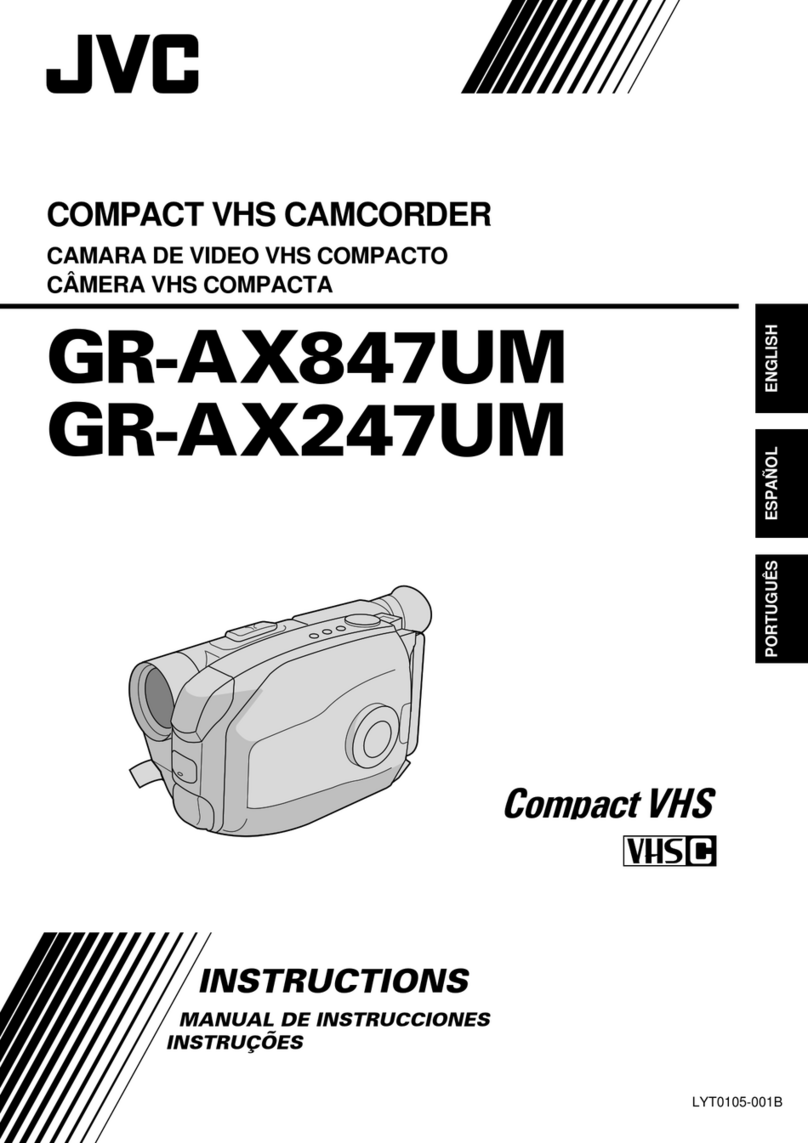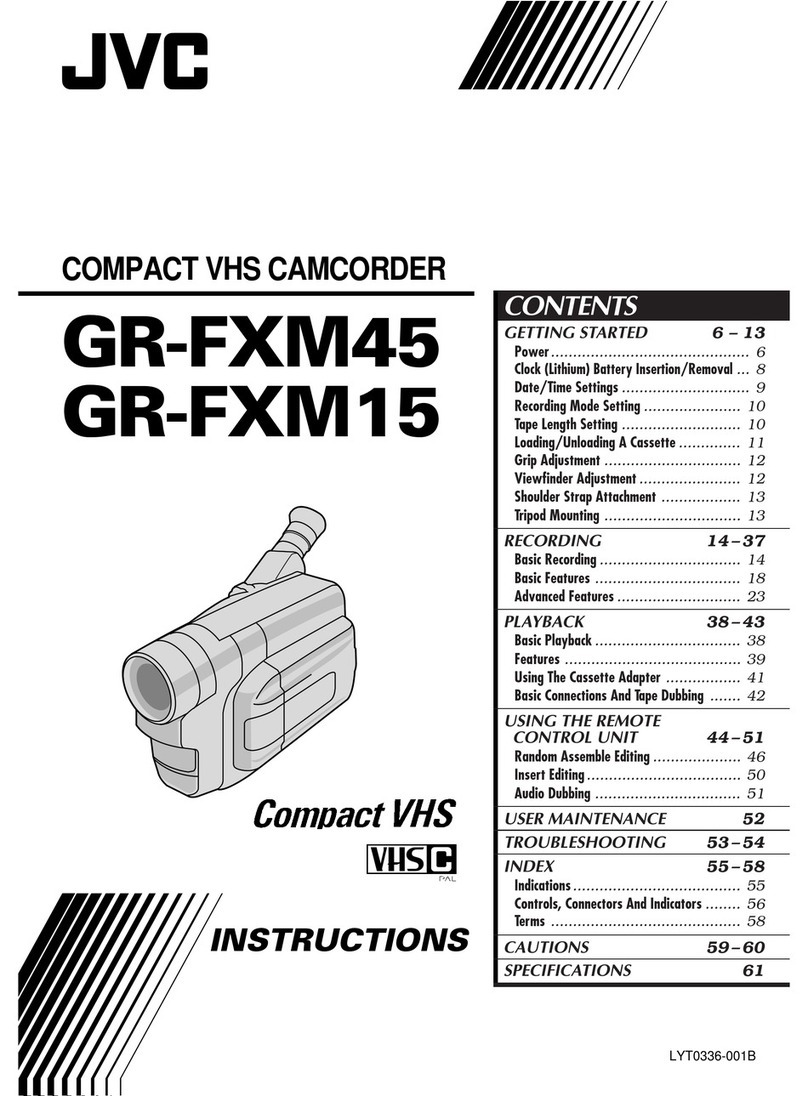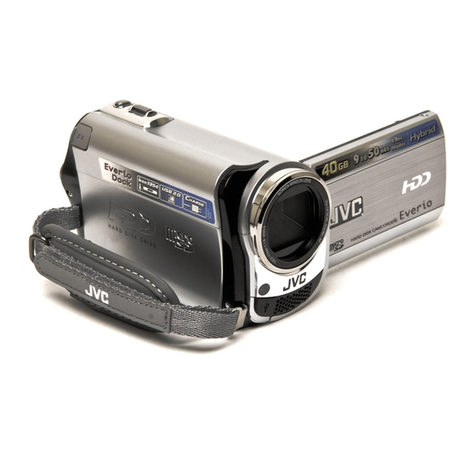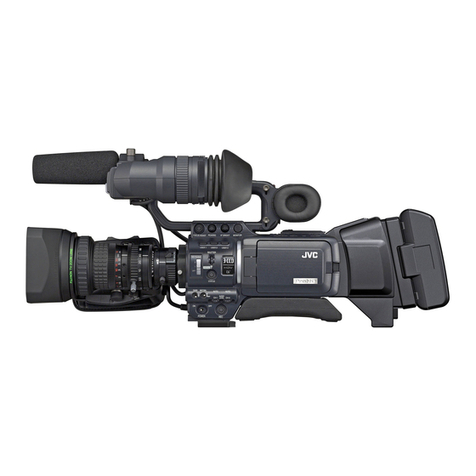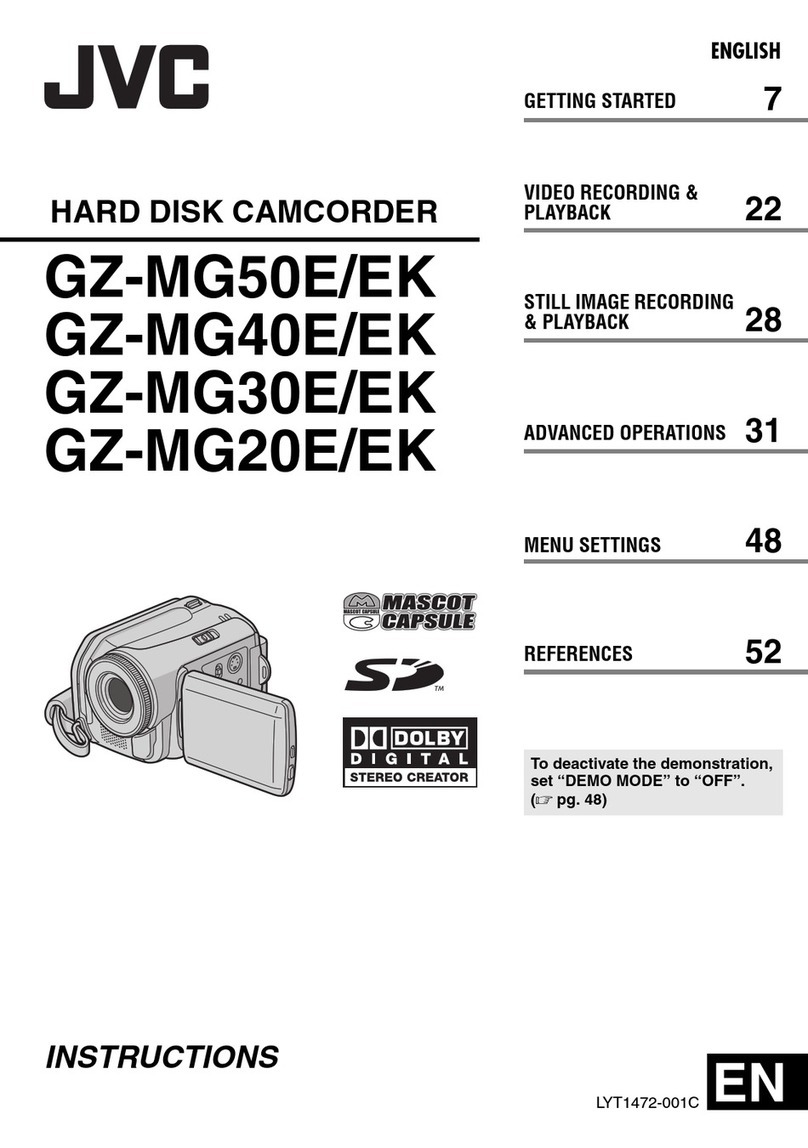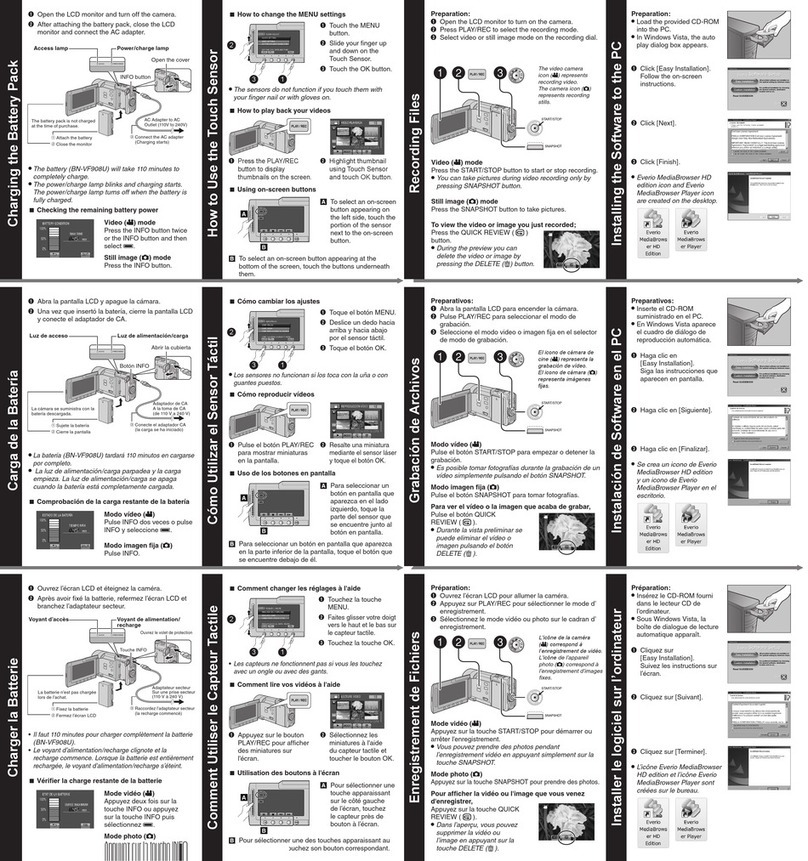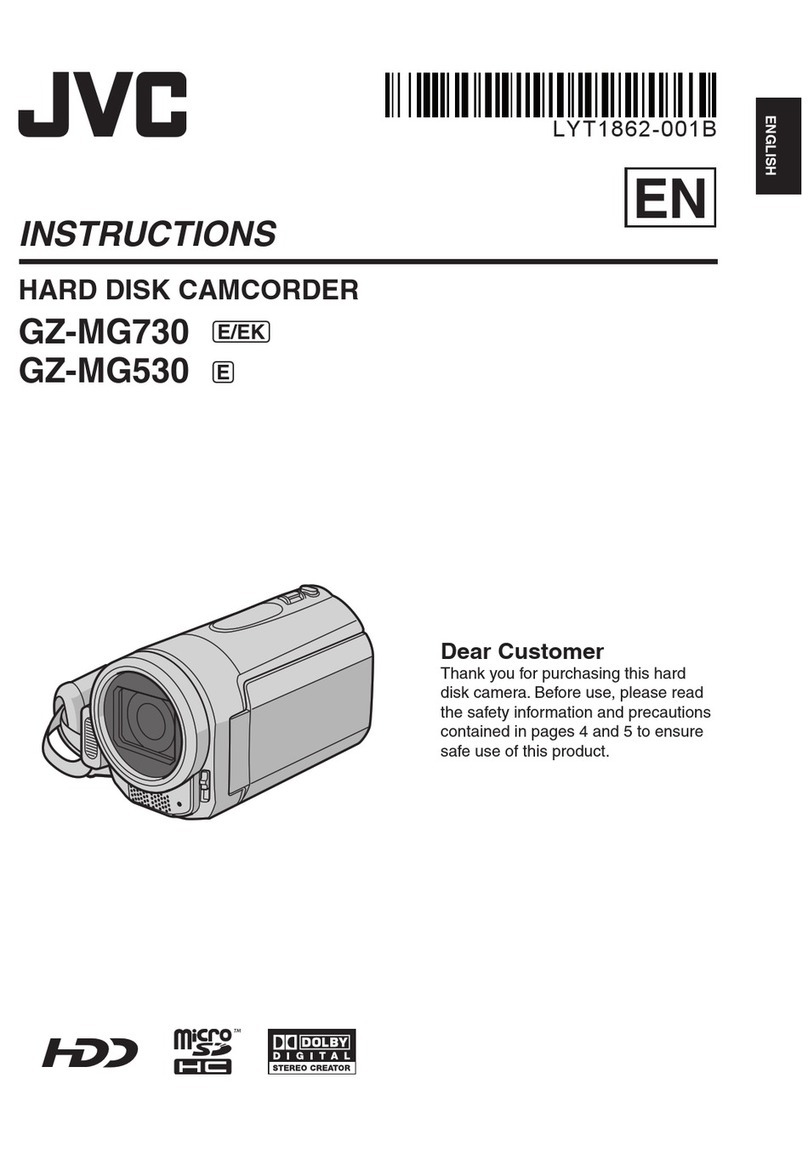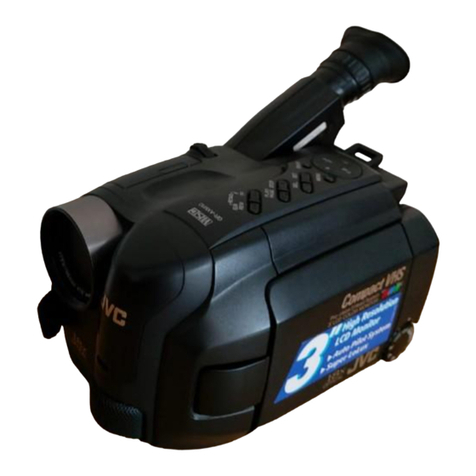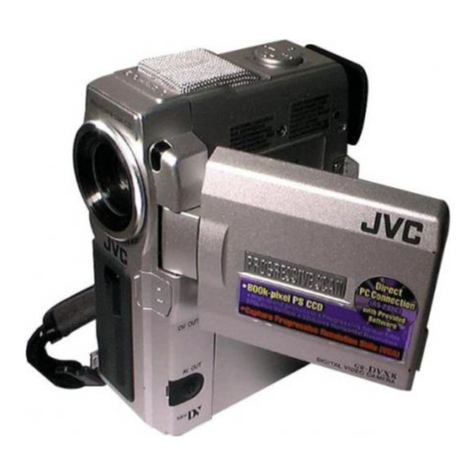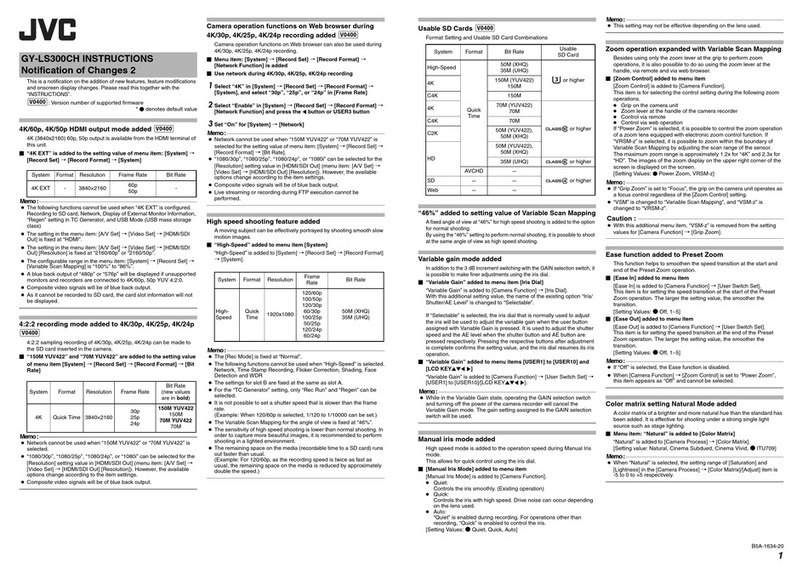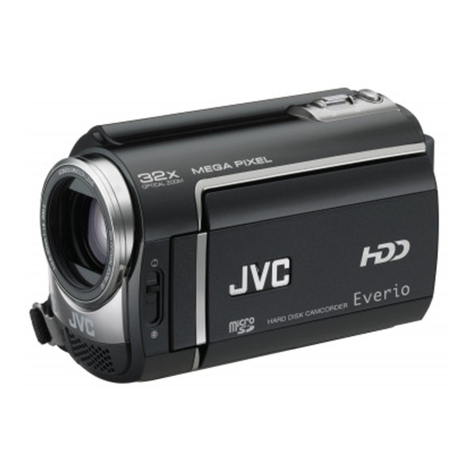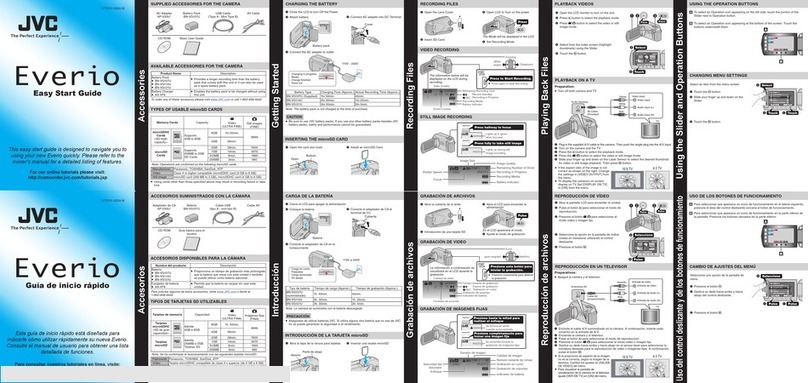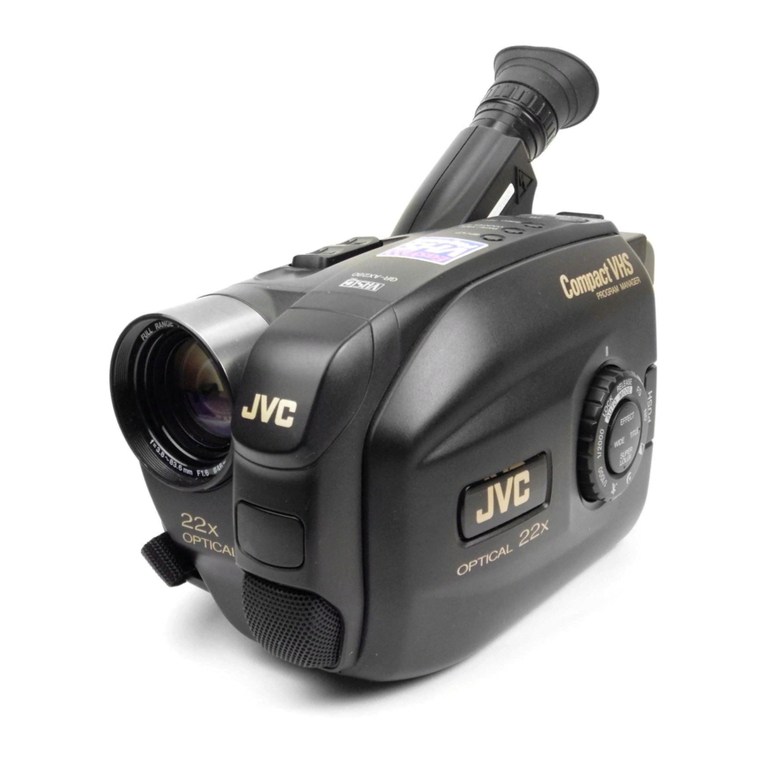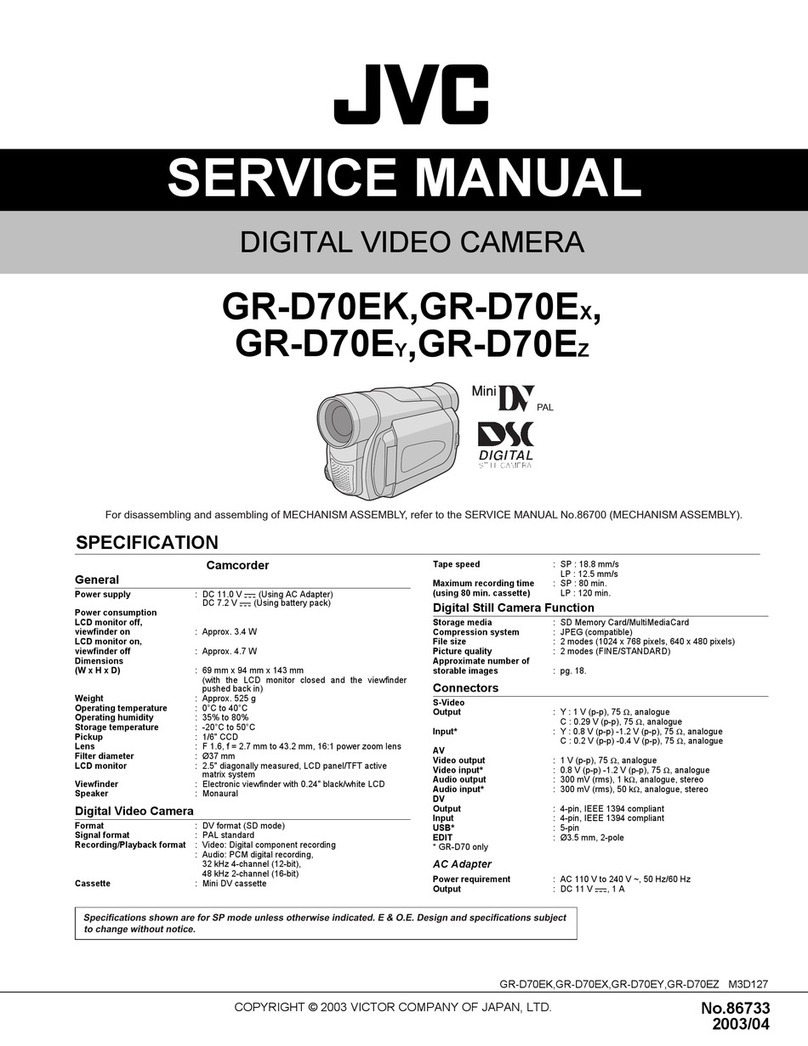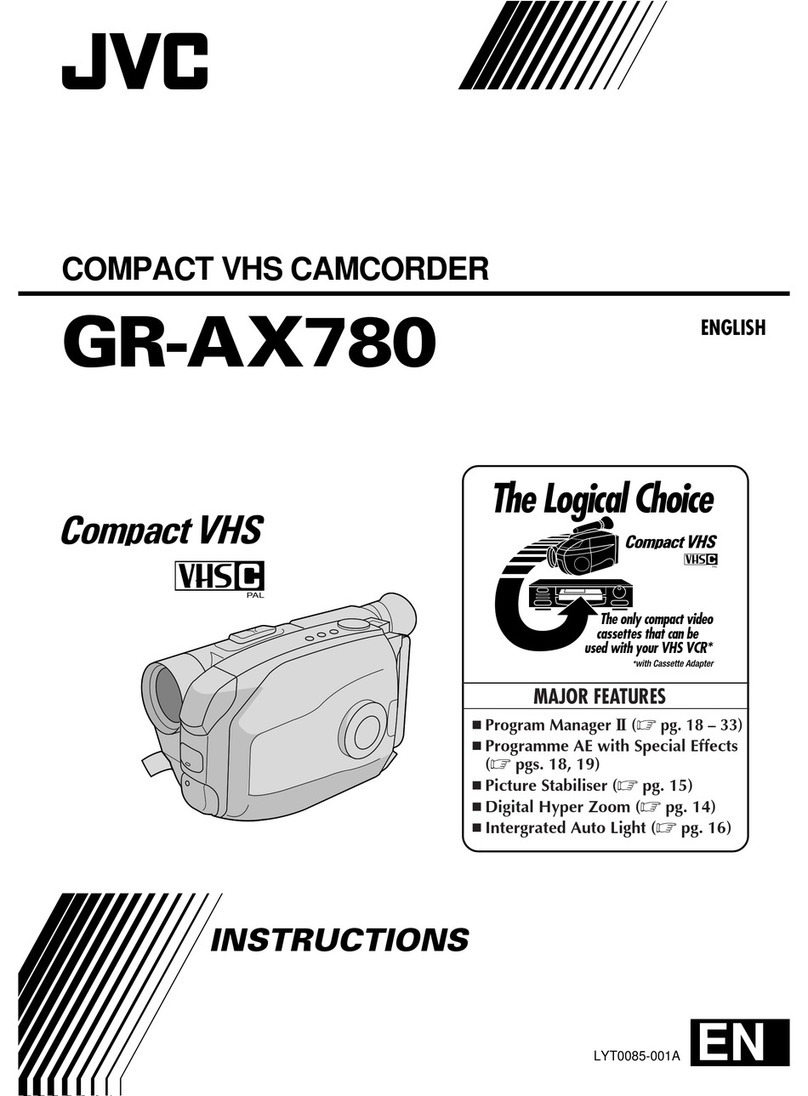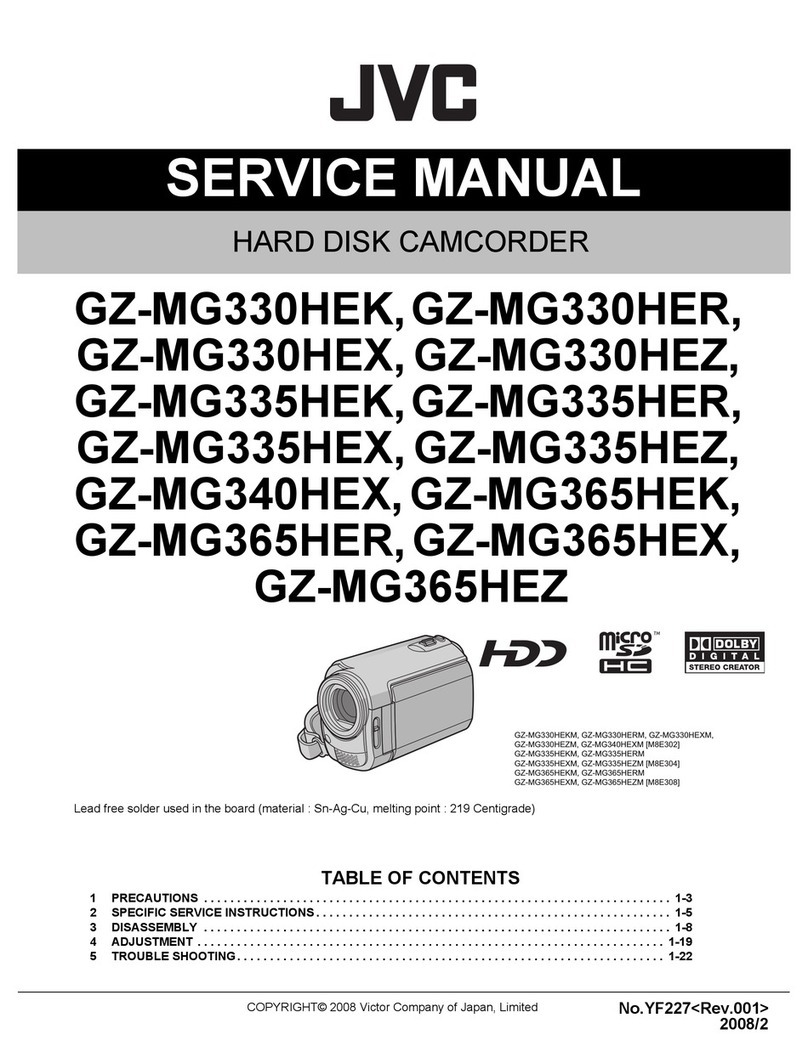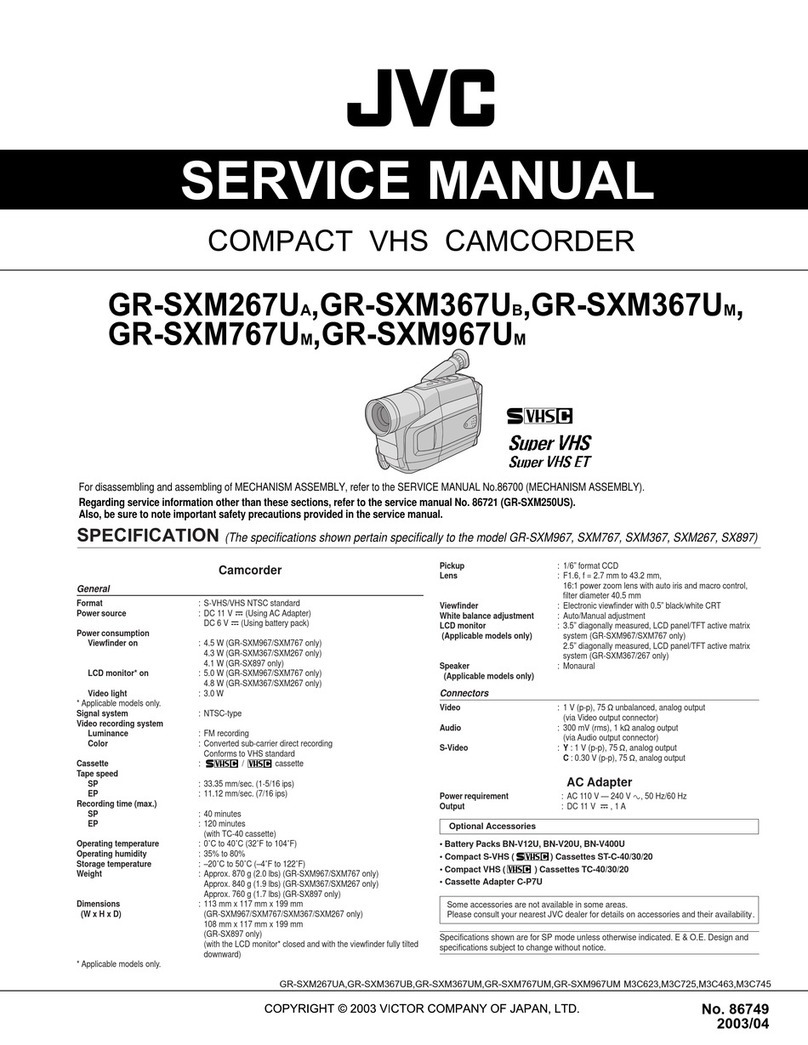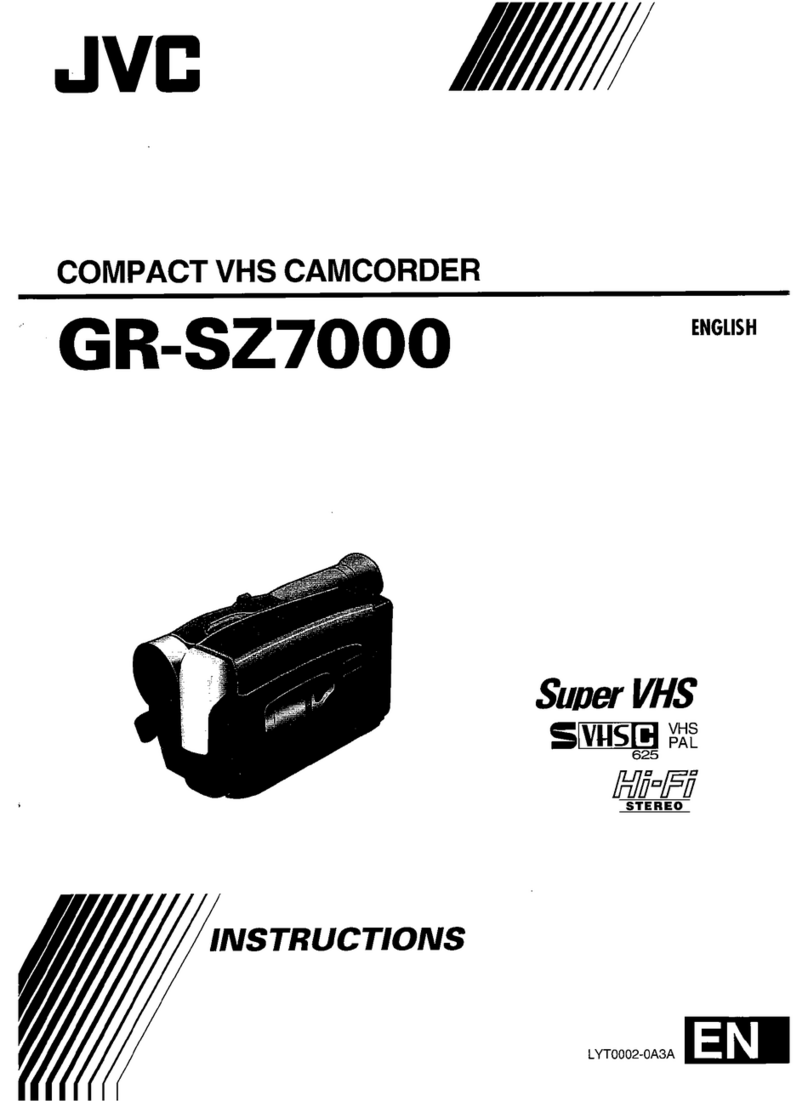
(No.YF059)1-7
2.1.3 Microdrive backup
Unlike the information on tapes, customers' information on
Microdrives can become unreadable in an instant. Backing up
users' record is strongly recommended to avoid any accident.
The above data shows: the elapsed time of copying the recorded
information on a Microdrive to a PC and the elapsed time of
formatting the Microdrive with the PC.
From the results of the measurement, it is clear that the data
transfer with a commercial USB2.0 Reader/ Writer is about twice
as quick as transfer with a PCMCIA card.
Using USB2.0 Reader/ Writer is recommended when frequent
data backup or data re-writing on the Microdrive is required.
Backup should be performed all the recorded files on the Micro-
drive.
Formatting must be done with the main unit that operates nor-
mally.
If a Microdrive that is more than 2 GB is formatted with the main
unit, it is formatted as FAT (FAT16), and a drive that is more than
2GB is formatted FAT32.
2.1.4 Checking the main unit/ Microdrive good or bad
In order to repair or check MC100 - 200, judging the cause of the
failures, whether it is the main unit or the Microdrive, is essential.
The product failures that are brought into repair/ check fall into
the following categories.
(1) Microdrive failures caused by the users handling such as
fall, shocks, and submergence.
(2) Main unit operation failures caused by the Microdrive fail-
ures.
(3) Microdrive operation failures caused by the main unit fail-
ures.
NOTE:
Unlike DVC tapes, the Microdrives of MC100 - 200 are recog-
nized as parts of the main unit. It is essential that the main unit
and the Microdrive are brought in as a pair for service. Basical-
ly, do not accept the main unit alone for repair or check.
2.1.4.1 Separations of the parts failures
The procedure to identify the causes of the failures whether it is
in the main unit or in the Microdrive is explained in this section.
2.1.4.2 Microdrive failures caused by user handling
As previously explained, Microdrive failures may possibly be
caused by falls or shocks. Further more, dropping Microdrives in
the water causes crucial failures to Microdrives.
Supplied Microdrives (not all the commercial Microdrives) have
the same type of Water Exposure Seal that are used in cellular
phones.
Before checking the failures, check whether there is a Water Ex-
posure Seal display appeared.
In addition, check whether there are any significant scratches,
bends, or dents that shows the sign of falls or shocks.
Other check items are as follows.
(1) Check whether there are any letters written with a pencil or
a pen on the label of the Microdrive. The pen pressure
gives distortion on the Microdrive, resulting in an operation
failure. It is noted in the Instruction Book.
(2) Check whether there are any stickers affixed on the Micro-
drive. The space between the Microdrive and the housing
is very little. Affixing unnecessary stickers may lead load-
ing the Microdrive in a wrong position, resulting in contact
failure or remove disk failure. There is a hole on the reverse
side of the Microdrive for ventilation through special filter.
Sealing the holes gives effect on the operation.
(3) Check whether the Microdrive label is peeled or turned. If
there are peel or turn in the label, the loading failure may
occur. Peels or turns will not occur under normal condi-
tions, thus storage or usage under hot and humid condi-
tion, near organic solvent, or exposure to the direct sunlight
are considered.
Recording detail Microdrive 1 Microdrive 㧞
(Recording Capacity)
N2B12JRA N2HNY1VA
FAT32 12m31s 12m36s
Normal format 00m37s 00m40s
FAT32 00m18s 00m19s
Quick format
00m10s 00m09s
16m16s 15m46s
07m25s 07m57s
29m30s 29m47s
14m08s 14m49s
41m23s 42m48s
22m47s 23m23s
56m15s 56m34s
30m02s 29m53s
via PCMCIA card
via USB2.0 reade
transmitted by PCMCIA card
transmitted by USB2.0 reader
transmitted by USB2.0 reader
transmitted by PCMCIA card
transmitted by USB2.0 reader
transmitted by PCMCIA card
transmitted by USB2.0 reader
transmitted by PCMCIA card
via PCMCIA card
via USB2.0 reade
Detection detail
15m(1GB)
30m(2GB)
45m(3GB)
60m(4GB)
File Transfer Time Measurement
Troubles?
Start
Troubles?
YES
Go to 2.1.4.2
Go to 2.1.4.3
With an emergency record?
End
NO
YES
The failure caused by the user's PC or
by the supplied software is considered.
NO
Troubles?
YES
Go to 2.1.4.4
NO
NO
YES
Check the Water Exposure Seal
Check the appearance
Perform a general operation check
using a MD other than the user drive.
Recheck the details of
the failure with the user.
Perform a general operation check
such as record/ replay.
Check the Water Exposure Seal,
significant scratches on the
exterior, bends, and dents.
Check whether it is a Microdrive failure
or a main unit failure by using the user's
Microdrive. Be sure to make a backup in
case of an accident.
Operate a general operation check
using the user Microdrive.
Check whether there is an emergency
record in the main unit, and check the
details of the record.
Check whether there is an emergency
record in the main unit, and check the
details of the record.
